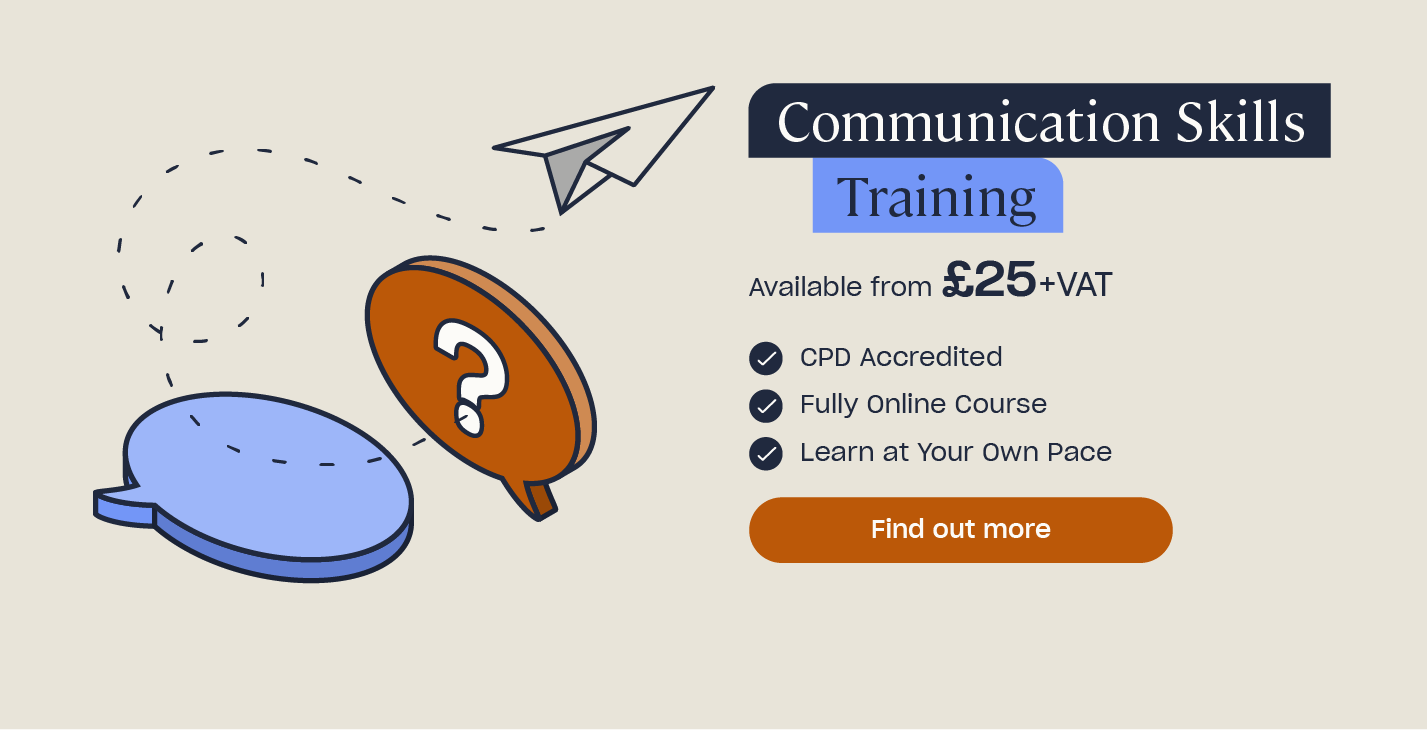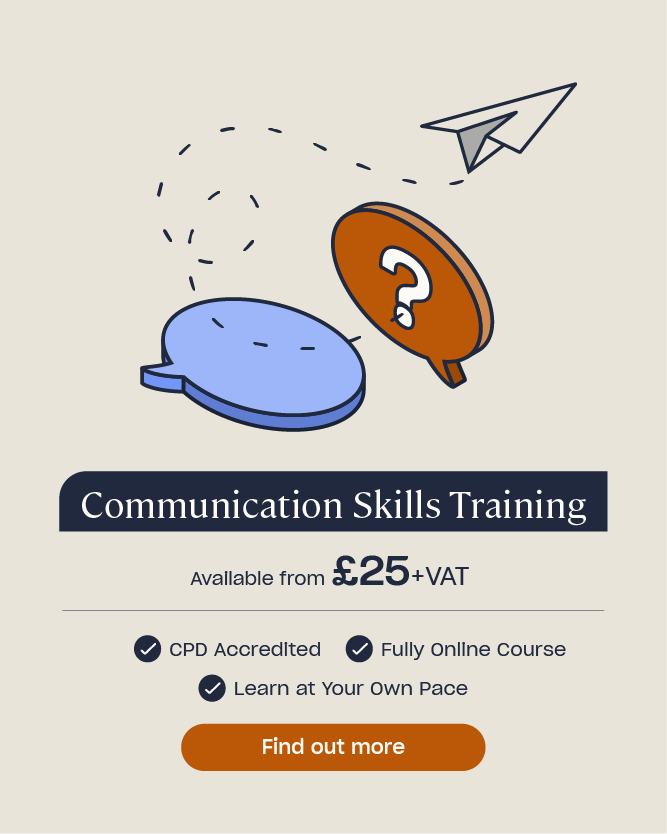How to Improve Active Listening in Communication
Active listening can help us to improve relationships with loved ones, friends, colleagues, and clients, impact job effectiveness, and even make us feel good. Yet in a world where self-broadcasting across our digital spaces is commonplace, thoughtful and considered listening is rare.
It is clear that society’s reliance on technology will continue to grow, but our need for human connection will remain unchanged.
The ever-popular Human Library project, for example, capitalises on this need, allowing users to ‘check out’ people instead of books. ‘Readers’ can choose their topic, sit with their ‘book’ and enjoy half an hour to ask questions and engage in deep and intimate conversation. The project provides people with the chance to connect and listen actively, and in doing so, it is helping to both mend and strengthen bridges between individuals and groups across society. Demand is high. People are yearning for the opportunity to listen and learn, with pop-up projects now appearing in major cities across the world.
In this article, we will define what is meant by active listening, discuss its importance in communication, and provide some actionable advice that you can use in both your personal and professional lives in order to become a better listener.
We spend roughly 60% of our communication time listening, but we’re not very good at it. We retain just 25% of what we hear.
Julian Treasure

What is Active Listening in Communication?
Active listening surpasses passive listening or simple hearing to establish a deeper connection between speaker and listener, as the listener gives the speaker full attention via inquiry, reflection, respect, and empathy.
Spataro and Bloch, 2017
Listening, by definition, is making meaning from sound. Passive listening is what we do most of the time, and it often involves listening for what we already know. This form of listening commonly takes place in a conversation when we are waiting for our turn to speak, or a moment to interject. When this happens, we are often distracted by our own thoughts and not focused on the speaker.
Think about the last conversation you had with someone when you weren’t really listening – you were pretending to, or you were nodding but thinking about your to-do list, or you became distracted by your phone. Here, you were listening passively.
In contrast, active listening is when you listen with focused intent – when you are truly invested in the speaker and experience empathy towards them. It involves being present and aware, rather than just quiet. Speakers are given the room to explore and assess their thoughts in a safe space, leaving them in a position to stimulate change.
In the midst of our busy lives and many responsibilities, it can be difficult to find the time to really invest deeply in a conversation. We are an impatient society – we want instant gratification and snippets of communication.
Yet active listening in communication has innumerable benefits, and better still, it is a skill that we can acquire. We can learn to refine and practise our ability to listen.

Why is Active Listening Important?
Active listening is an important way to bring about changes in people.
Rogers and Farson, 1987
There are many reasons why active listening is important. Have a look at some below:
We need it
Despite our rapidly evolving digital age, our need for human connection will remain. Active listening is a free and highly-impactful tool that we can use to help build stronger and more positive relationships with those around us.
Less misconceptions
Misconceptions often occur when communication is unclear. Careful and sensitive listening lessens the likelihood of misunderstanding. Active listening can also reduce the possibility of conflict occurring – within both personal and professional relationships, and across wider society.
Employers like it
Active listening is highly prized by many employers. In fact, it has been identified as one of the top 10 skills required in employment of the future. Active listening is also a key transferable skill, being beneficial in many roles, especially managerial positions.
It makes us feel good
If someone takes the time to really listen to how we are feeling, then we feel valued and connected – and social connectedness is a key mental health protective factor. The sense of recognition and validation that we receive through the process is deeper and more intimate than a ‘like’ or a ‘new follower’. Being understood in this way can also help us to realign our priorities, become more in tune with ourselves and others, and gain a greater sense of perspective – leaving speakers engaged and inspired.

Tips for Active Listening
Active listening is a skill. If you wish to become a more present and sensitive listener, time and effort are required. Start by taking a look at our top tips for active listening in communication:
Make space
Think carefully about the last conversation you had with a friend or colleague. How many times did you interrupt the speaker? And how many times did they interject or speak over you? In order to truly listen, make ‘space’ for the speaker. Give them the ‘room’, the freedom to explore how they feel, without time limits or the possibility of interruption.
Equally, try not to fill any gaps of silence. Instead, embrace them. Silence gives both parties time to digest and reflect, and it shows the speaker that you believe they are worth the wait.
Be present
Active listeners use their five senses. They are fully grounded and connected with the present, avoiding all distractions. This enables them to focus solely on the speaker.
Assess non-verbal communication
Consider the speaker’s body language, facial expression, tone of voice, and the words they are using to determine how they are feeling. What are they doing or saying, and what is the underlying message? Being aware of non-verbal communication makes us more sensitive and empathetic to others’ needs.
Similarly, use your body language to show that you are listening – nod when they require validation, make eye contact if it is appropriate, and adopt open body language.
Respect the speaker
It is difficult to listen impartially. Every aspect of our communication is influenced by our past experiences and the way in which we understand the world around us. It is common to respond to others’ problems with solutions: ‘I think you should…’, pass judgement: ‘Oh, no. You didn’t, did you?’, or to encourage without due consideration: ‘Come on. It’ll be okay in the end.’
However, to truly gain the speaker’s respect, see the conversation as an exploration space – a safe environment for the speaker to evaluate how they truly feel.

Focus on them
Dr. Andrea Wojnicki uses the phrase ‘myopic’ to describe our innate obsession with the self. We are wired to focus on ourselves. If we make a conversation about us, or always steer it back to our own needs, we are missing out on an experience to learn from the speaker.
When listening actively, your target is to gain information from the speaker, rather than to share, advise, or impart knowledge.
Although you may be itching to jump in and share an anecdote or tell the speaker about the time when…, try to refrain from doing so. Instead, listen to them intently. By doing so, you are gaining vital active listening practice. You can then use this measured and impartial approach when exploring and managing your own feelings and emotions.
Ask questions
Use open questions to dig deeper – questions that start with ‘how’ or ‘why’, for example. These require the speaker to open up and investigate how they are feeling. Verbalising your thoughts also allows you to assess them, which can help you to gain clarity and certainty.
Validate
After listening to the speaker, paraphrase their words. This should be in your own words, rather than the speaker’s. Try: ‘What I understand from what you’re telling me is…, am I right?’
You can repeat key words in the speaker’s sentence to encourage them to elaborate or explore how they are feeling. For example, if a colleague at work says, ‘I feel so stressed.’ Instead of replying with, ‘yes, me too’, ‘you don’t know what stress is’, or ‘don’t worry’, say ‘stressed?’
These techniques not only inform the speaker that you have understood them, but that you value them too.
Practise
If we are to become accurate, careful, and considered listeners, we must practise. With time and self-reflection, you can improve your ability to listen.
Reflect on conversations you have with friends and colleagues – the good and the bad. What worked well, what didn’t, and how could you use the strategies above to improve outcomes next time?
Communication Skills Training
Our Communication Skills training course, written in collaboration with broadcaster and journalist, Charlotte Leeming, introduces a range of strategies that you can use to boost your communication skills. Find out more here.

How to Improve Active Listening Skills
Try some of the strategies we have listed above in your everyday conversations and reflect upon the impact they have.
You can also watch skilled interviewers. Assess the questions they use, responses they provide, and how they use their body language throughout the conversation.
In a professional context, if appropriate, ask to observe a conversation where active listening techniques are used.
By both observing and practising, you are doing all you can to become a more careful and considered listener.
Active listening in communication is where you listen with focused intent. It can be used effectively within both personal and professional contexts to help speakers explore their thoughts, assess their feelings, and gain much-needed clarity. When used effectively, the impact can be truly transformative for both individuals.
Further Resources:
- Online Communication Skills Training
- Transferable Skills: What Are They and Why Are They Important?
- How to Prepare for a Performance Review: Free Template
- How to Chair a Meeting Effectively
- How to Promote Inclusive Communication in the Workplace
- What are Personal Development Goals for Work?
- What is Asynchronous Communication?: Definition, Examples and Benefits











